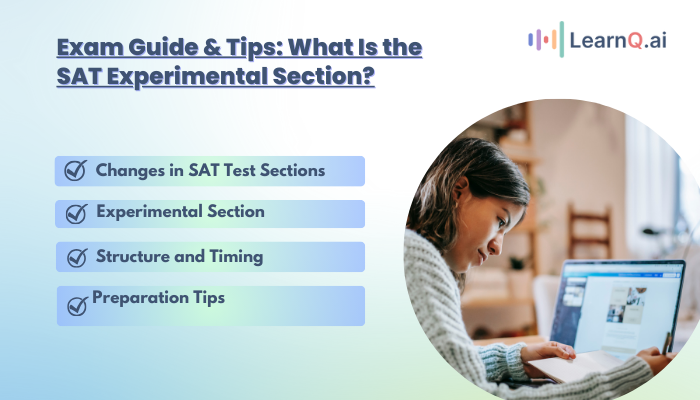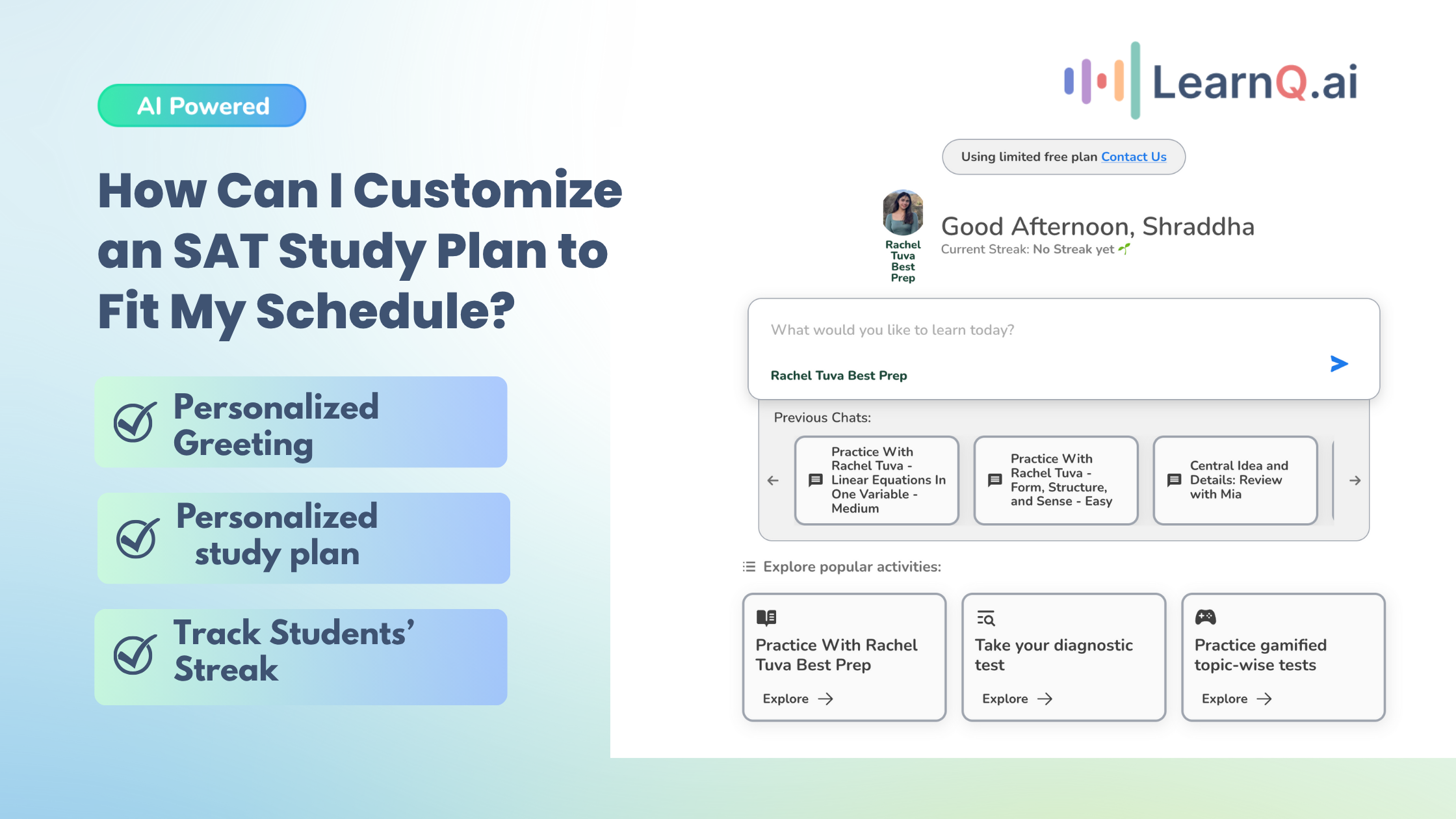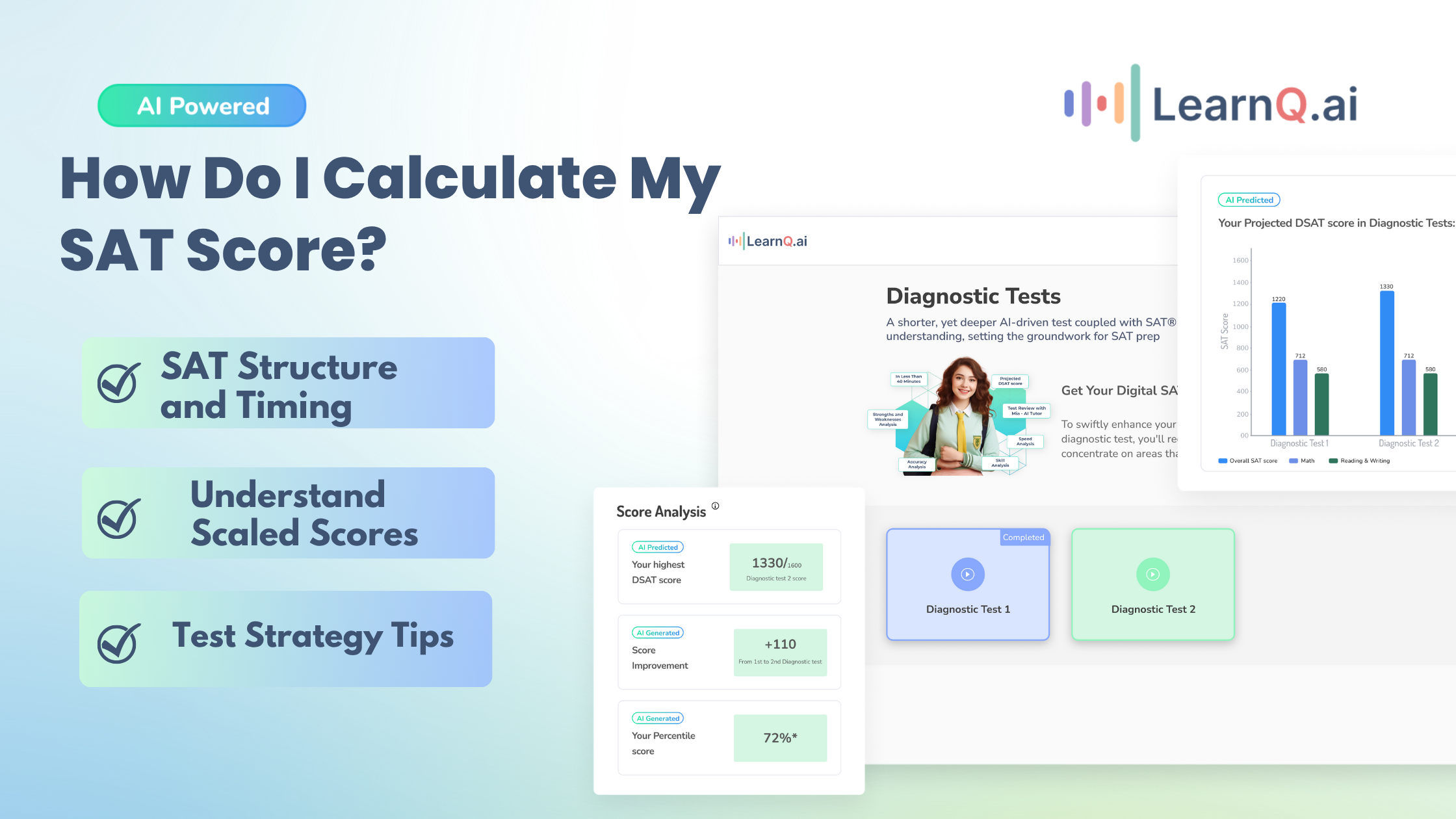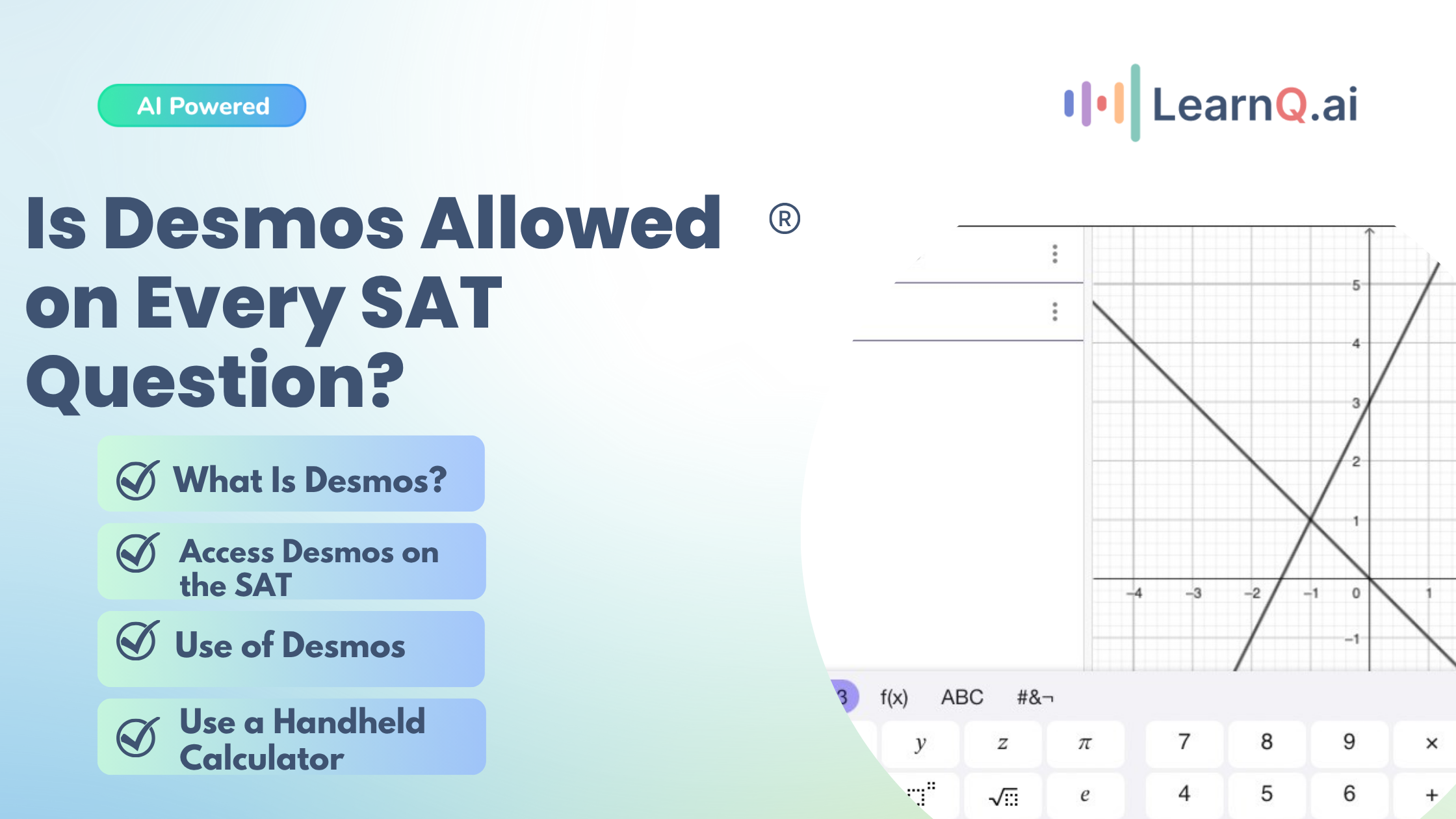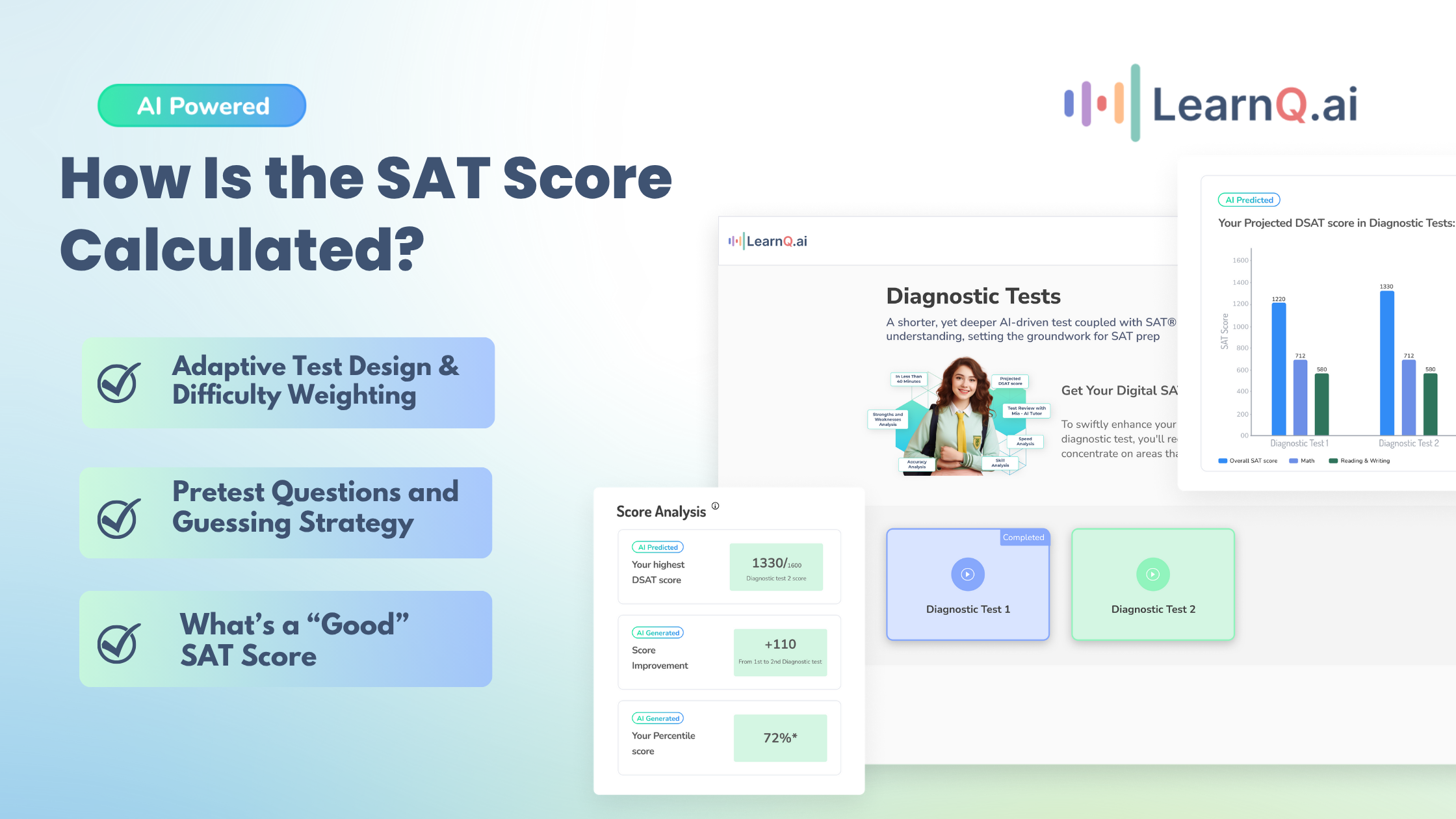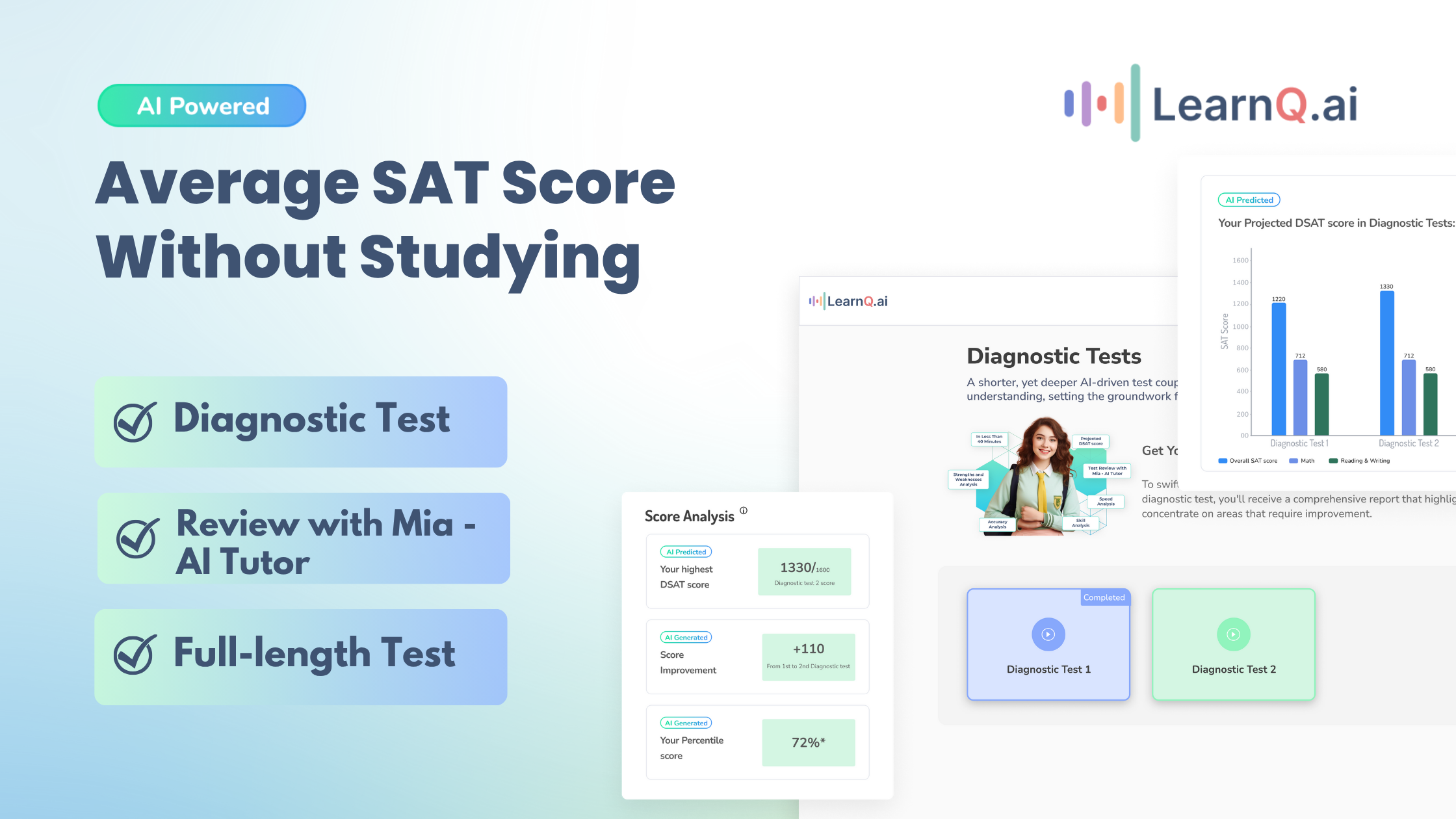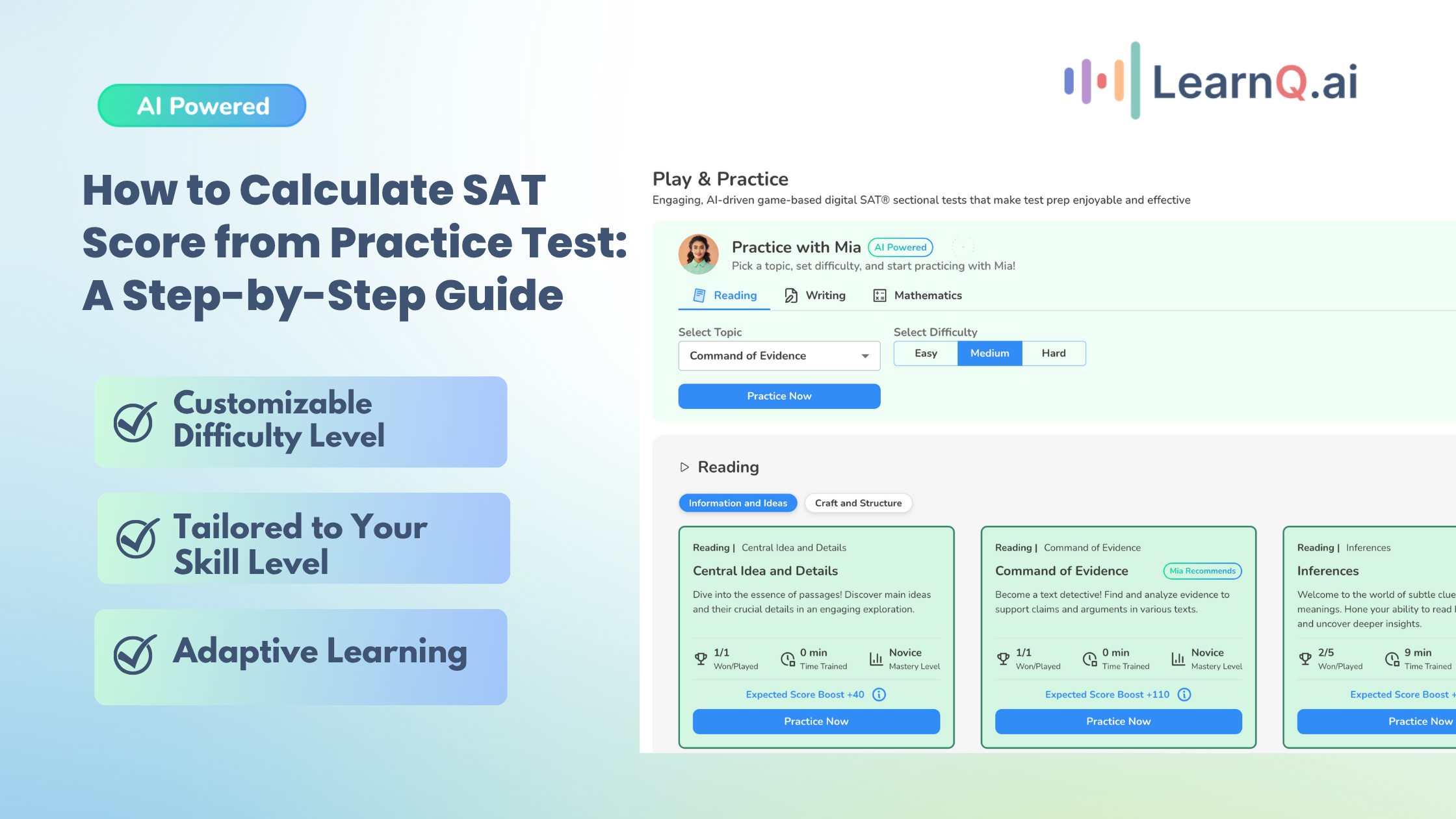When you’re preparing for the SAT, there’s one part of the test that might catch you off guard: the experimental section. It’s not something most people talk about, yet it shows up on test day without warning. You might wonder, “Why is it there?” and, more importantly, “How does it affect my score?”
The truth is that the experimental section has nothing to do with your final score. It’s a tool the College Board uses to test new questions for future exams. But even though it won’t impact your score, you’ll still need to give it the same focus as the rest of the test.
LearnQ.ai is Powered by VEGA AI—Is your Institute Next?
Give students a Duolingo-style test-prep platform with Shopify-level customization for tutors and institutes.
Last year alone, nearly two million students sat for the SAT, including this experimental section. You’re not alone in facing this part of the test; understanding it can help you confidently approach the day.
In this guide, we’ll break down what the SAT experimental or extra section is, why it exists, and how you can handle it without letting it affect your performance.
What Is the SAT Experimental Section?
Let’s get straight to it—what exactly is the SAT experimental section? You’re not alone if you’ve heard whispers about it but aren’t sure what it means.
The experimental section is an extra part of the SAT that doesn’t count toward your final score. The College Board uses it to try out new questions for future tests. You won’t know which section it is because it looks just like any other part of the exam. It could be a Math section or Reading and Writing. And while it doesn’t affect your score, you still have to complete it just like the rest of the test.
The inclusion of this section isn’t new, either. Over time, the SAT has undergone several changes, and the extra section has always shaped future versions of the test. It’s how they ensure your questions are fair, balanced, and relevant.
In short, the experimental or extra section is there for a reason. It’s not something you can skip or ignore. But now that you know what it is, you can approach it with the same energy as the rest of the exam without letting it throw you off.
Historical Context and Changes in SAT Test Sections
The SAT has changed over the years, and the experimental section has always been part of this evolution. Here’s a quick look at how the SAT’s extra section has transformed over time:
- Old SAT (Pre-2016):
- The experimental section was an additional 25-minute part of the test.
- It could be Reading, Writing, or Math.
- All students took it, and it was mixed into the test without any clear indication.
- Students didn’t know which part was experimental, so they treated every section as if it would count.
- The goal was to gather honest responses for testing future questions.
- New SAT (2016 Onwards):
- The College Board reintroduced the experimental section in a new format.
- It became a 20-minute section, given only to students who opted out of the Essay.
- It could focus on Reading, Writing, or Math.
- The section does not count toward the final score but helps test new questions for future SAT versions.
- Transparency about the section has been limited, leaving students to guess when it appears.
Also Read: Report SAT Essay On Common App & Combining Them.
Enhance your Digital SAT study routine with AI-driven insights and personalized practice tests.
Purpose of the Experimental Section
Now that you know what the experimental section is, let’s dig into why it’s included in the SAT in the first place. There’s more to it than just giving you an extra part of the test. The extra section serves a few specific purposes:
Testing New Questions and Formats
The College Board uses this section to try out new types of questions. These questions could show up on future SATs, so they need real-world data on how students respond to them. It’s their way of making sure future questions are transparent, fair, and challenging enough without being confusing.
Ensuring Fairness Across Demographic Groups
This section also helps the College Board balance the test across different groups. They analyze how students from various backgrounds perform on these new questions to ensure that no group is unfairly advantaged or disadvantaged.
Collecting Data for Future Improvements
The data gathered from the experimental section allows the College Board to improve the SAT. By analyzing how students handle these questions, they can tweak and adjust future tests to better reflect what students need to succeed.
Structure and Timing
Let’s talk about when and where the experimental section shows up during the SAT. Knowing this can help you mentally prepare and avoid any surprises on test day.
- 20-Minute Extra Section: If you’re taking the SAT without the optional essay, you’ll get an additional 20-minute section after you’ve completed the primary test. This extra section can be in Reading, Writing, or Math—there’s no way to predict which one it will be.
- When It Occurs: The experimental section usually comes after the standard parts of the test, so once you think you’re done, you’ll have this extra bit to complete. It’s designed to blend in, so it feels like just another part of the test.
Impact on Scoring
Now, the big question: does the experimental or extra section affect your score? The simple answer is no. But let’s break it down a bit further.
- It Doesn’t Count: The experimental section is completely unscored. Whether you do tremendous or struggle through it, it won’t impact your final SAT score. This section is there for research, not for grading.
- Operational vs. Experimental Questions: While most of the test contains what are called “operational” questions—ones that count toward your score—the experimental or extra section is made up entirely of unscored “pretest” questions. The College Board uses these questions to gather data and test new material for future SATs.
To take your SAT prep to the next level, LearnQ offers essential tools like practice tests with adjustable difficulty and personalized guidance from Mia, your AI tutor. Pair these with the College Board’s resources, and you’ll be fully prepared to boost your score, avoid retakes, and save on score-sending fees.
Also Read: Comparing Difficulty: Real SAT vs Practice Tests.
Student Experience and Identification
Let’s talk about what it’s like actually to face the experimental section. The experience is straightforward for most students, though it can feel a little unexpected.
Common Reactions
Many students don’t realize they’re dealing with the experimental or extra section until it shows up. You might think you’re done with the test, only to see another section pop up on your screen. The good news? It’s just 20 minutes long. The key is not to let this surprise throw you off. Stay focused and treat it like any other part of the test.
Can You Spot It?
Identifying the experimental section during the test is tricky. It’s designed to look just like the other sections, so no clear sign says, “This is the experimental part.” Whether it’s Reading, Writing, or Math, it blends in, making it nearly impossible to know for sure. That’s why it’s best to approach every section with the same level of effort and focus.
Enhance your Digital SAT study routine with AI-driven insights and personalized practice tests.
Preparation Tips for the Experimental Section
Even though the experimental section doesn’t affect your score, how you handle it matters. Here’s how you can approach it to stay sharp and maintain your momentum throughout the test:
- Treat Every Section the Same
Since you won’t know which part is experimental, give each section your total effort. Don’t slack off or rush through any part of the test. Consistency is critical; this habit will help you focus for the entire exam. - Stay Focused
It’s easy to lose focus once you hit that extra section, especially if you think you’re already done. But keeping your concentration for those last 20 minutes is crucial. Stay engaged, and remind yourself that this is just part of the process. - Manage Your Energy
Pacing yourself throughout the test is essential. By the time the experimental section comes around, you might feel mentally drained. This is why practicing full-length SAT exams, including breaks, is helpful. It builds your stamina and prepares you for the long haul. - Take It Seriously
While the experimental section won’t impact your score, it’s still important to approach it with focus. Skipping questions or losing concentration could break your rhythm. Build good habits by paying attention to every question, even the unscored ones.
LearnQ.ai is powered by VEGA AI—Is your institute next?
Offer students a Duolingo-style test-prep platform with Shopify-level customization for tutors and institutes.






Conclusion
By now, you’ve got a clear picture of what the SAT experimental or extra section is, why it exists, and how to approach it. It may seem like an extra hurdle, but knowing what to expect can help you tackle it without stress.
Remember, even though this section doesn’t affect your score, giving it your best effort will help you stay focused and finish strong. Every part of the SAT is a chance to build good habits that will serve you well on test day.
To maximize your performance across the board, you must be prepared for every section—including the one you didn’t expect. With the right mindset and preparation, you can handle anything the SAT throws your way.
Getting ready for the SAT or looking to tackle that extra section with confidence? Start your prep with LearnQ! With free diagnostic tests, practice exams, and Mia, the AI tutor guiding you through each step, you’ll have everything you need to master the SAT and finish strong.

